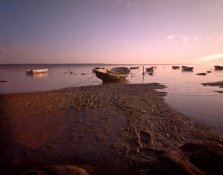having done more e-6 than I care to remember, I can attest to a few things.
1: fairly critical temp and chemistry balance. - That is if your running control strips, using a densitometer, and doing this for customers so your process is within kodak limits. The kodak chems used to continually drift cooler with use and replenishment requiring the addition of NaOH solution to keep it balanced. if you went too far, you had to add sulfuric acid solution. 1ml per liter of color developer, per .05cc shift. Never used fuji chems, imagine they are the same.
2: Doing it yourself - at home - easy. Your not having to thread a needle with the balance.
If you can do black and white - bake a cake or souffle - or drive a car in rush hour traffic you can do this.
You should aim for CONSISTENT time, temp, and agitation. You don't have quite the latitude so just don't be sloppy. But you will get lovely images. And if you did not run a control strip, you don't know or care how far "off" from the reference strip you are. You will get decent imaged. And if they seem to get little cooler with chemistry use, add a bit of sodium hydroxide solution to the color developer. if they go a bit too yellow, add some sulphuric acid solution. ( Cant remember how infrequent that was )
Keep from cross contamination, and you will be happy. You can get quite a bit out of 5 liters, just try and use it all up in a few months, and keep it well sealed or even refrigerated. You will likely have to adjust the first developer times as you use it. That's just like b&w cause it IS. The color developer is less finicky, and the bleach fix and other steps are to completion. Once out of the reversal bath it's light safe. Way back in the day e-3 used light reversal, and e-4 ( and e-5, ea-5, and ar-5) was almost identical but with chemical reversal, differing temps, and pre-hardener. One was considered for "amateur films" and the other for professional and (E-5 variations) aerial films. The e3 and e4 used a rather powerful ferricyanide bleach compared to the edta based one used today. iirc.
easiest course is just bite the bullet, order it and process. You will be hooked as soon as the trans hits the light box.












